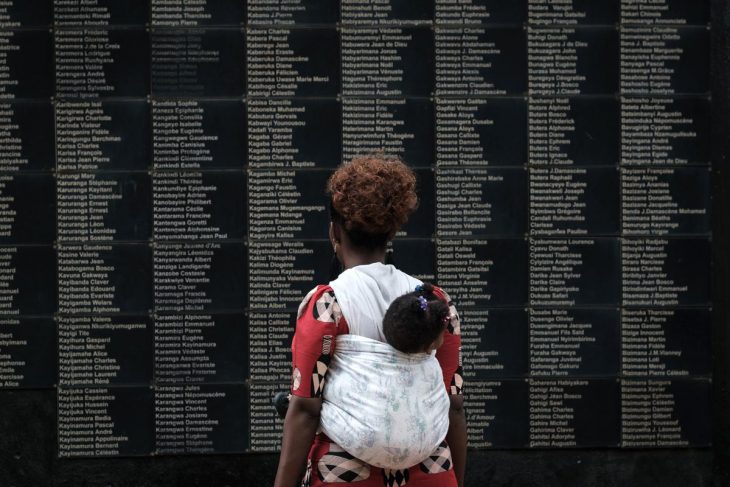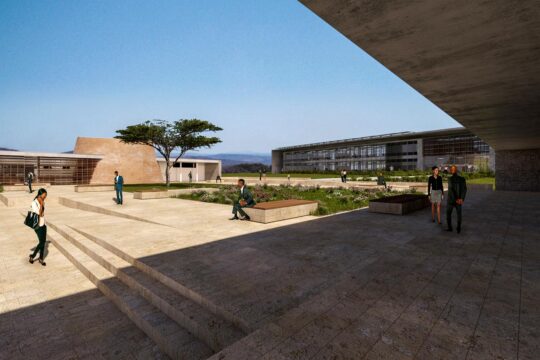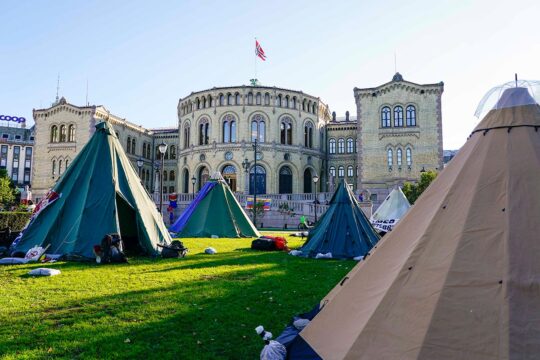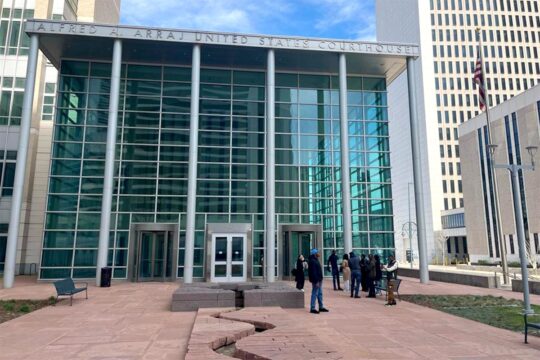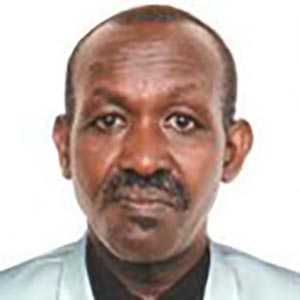On D-2 of the 25th commemoration of the genocide, a literary café and an international symposium composed of writers, historians and researchers proposed a memorial policy focused on writing as a “bridge between the past and the future”. When on 7 April, five heads of state, including host Paul Kagame and heads of government, lit the flame of hope, Belgian Prime Minister Charles Michel declared that he was there “on behalf of a country that also wanted to assume, eye to eye, its share of responsibility in the face of history”. But when you enter the Gisozi Memorial, the equations may seem dizzy. In this death gallery, a guide explains that more than 250,000 victims are buried here! That is at least a quarter of the one million Tutsis killed in 100 days between April and July 1994. When no less than 220 genocide memorials mark out, from North to South and from East to West, this small country of 26,338 km2; not to mention of course the thousands of people without a grave.
The amazement remains when the guide explains that a studded club, called Ntampongano y’umwanzi, literally No concession to the enemy, is among the weapons that have killed the most people. “We expected instead that a weapon of mass destruction would be mentioned,” whispered a journalist as he did for himself. The history of this genocide at a glance? “Yes, the story of our dead, our story is better told here in a memorial than in a book, with living testimonies,” explains Martin, a survivor from Kinyinya, a district of Kigali, whose “more than fifty relatives” including his wife and five children lie in this memorial.
Memorials, assets of the State
In the immediate aftermath of the genocide, the survivors, with the support of the police, began to bury their dead, sometimes in disorder, with the intention of giving them a decent burial. And when the State takes in hand a few instruments of memory such as “burial in dignity of victims”, the creation of memorials and the organization of national commemorations, the country is already full of family graves and genocide cemeteries. Thus, Act No. 15/2016 of 2 May 2016 regulating the ceremonies of commemoration of the genocide perpetrated against Tutsis and the organization and management of genocide memorial sites will be promulgated with the objective of meeting the challenges related to the management, maintenance and security of the many cemeteries and memorials scattered throughout the country. Under the new legislation, these memorial sites are now all part of the national heritage and are placed under the responsibility of the National Commission for the Fight against Genocide (CNLG), a government institution provided for in the 2003 Constitution and established in 2007.
According to the CNLG, there are nearly 210 memorials in the country, but only six are classified as “national level”. These are Gisozi, in the city of Kigali, Nyarubuye, Nyamata and Ntarama, in eastern Rwanda, and Bisesero and Murambi, in the southwest of the country. Each of these six memorials has a “particular national historical significance with regard to the planning and execution of the genocide perpetrated against the Tutsis,” explains Jean-Damascène Bizimana, Executive Secretary of the CNLG. Four of these six memorials, namely Gisozi, Nyamata, Bisesero and Murambi, were also submitted to UNESCO in 2012 for inscription on the World Heritage List. The case is still pending. In addition to these national memorials, the country has district memorials - at least one for each of the 30 administrative districts. According to the law, “each district has at least one memorial site” determined on the basis of “a historical aspect of the genocide” in this administrative entity.
Four memorials proposed as UNESCO World Heritage Sites
Murambi, in the heart of a region, the Southwest, where more than 20,000 Tutsis had already been massacred in 1963, is according to the CNLG “the oldest laboratory for the genocide of the Tutsis”. At that time, some foreign media and researchers had already referred to these pogroms as “genocide”. Murambi also symbolizes, according to Kigali, foreign involvement in the genocide. French soldiers of the Operation Turquoise are accused by Rwanda not only of covering the perpetration of serious crimes in 1994 but also of having themselves committed murder and rape. Paris has always denied these accusations.
Nyamata, named after a church where tens of thousands of Tutsis were massacred in 1994, in a single day, is the symbol of the extreme desacralization of places of worship transformed into slaughterhouses during the genocide. The victims are surviving descendants of the Tutsis deported in 1959 to this inhospitable region, which was then infested with tsetse flies, to be exterminated. Bisesero, nearly 150 km away, on the Congo-Nile ridge, symbolizes the resistance of the Tutsis who sold their skin dearly in 1994. The Tutsi men of this place, armed with stones, spears, bows and arrows, withdrew from the heights and in vain resisted the attackers equipped with guns and grenades.
Finally, Kigali is not a direct site of the genocide, unlike the first three. It is a memorial where the bodies of victims killed throughout the capital are buried. Among these, mainly Rwandan, there are also foreigners whom the executioners assimilated to the Tutsis or considered as their accomplices. The Kigali Memorial, part of which traces other genocides perpetrated around the world, represents this universality of victims. For the CNLG, “recognizing these sites as a memorial to humanity is an effective strategy to combat the crime of genocide and crimes against humanity, genocidal and negationist ideology”.
Towards a unified memory policy
First, before being scheduled from April 7 to 13, the official commemorative week runs from April 6, the date of the crash of the plane of former President Juvenal Habyarimana, considered to be the detonator of the genocide. This creates serious friction between a government of “national unity” and Ibuka, the main survivor organization. “By including it on April 6, the State itself fell into the trap of revisionism or even negationism,” said one of its former leaders. From 1994 to 2003, different terms are used in Kinyarwanda to refer to the same genocide, which are also confusing. Thus the terms Intambara (war), Itsembabwoko (massacre of a group), Itsembatsemba (massacre) or Itsembabatutsi (massacre of Tutsis) are commonly used. We will wait for the 2003 Constitution to harmonize with the kinyarwanda’s borrowing of the term jenoside, itself replaced by the expression jenoside yakorewe Abatutsi, “genocide committed against Tutsis” with the 2008 constitutional reform.
What is the status of all memorials? What is the place of those built by survivors’ associations or families? Are they all state-owned? The year 2008 marks a decisive turning point in the definition of memory policy, with a legislative arsenal that defines the responsibilities of the CNLG, in charge of the management of memorials and memory policy. This law seems to “nationalize” the places of memory of the genocide and leave no room for individual mourning and family graves. Its amendment, in 2016, provides for consultation with families to consolidate family graves in memorials. Although “what the state wants is the law,” says Christophe, a survivor of the Nyamata massacre, ironically, before adding: “What could I do? My mother and brothers were taken from me, which still bound me to my home. I don't want to go back there anymore.”
“Let’s commemorate by developing”
Kwibuka25 – the official term given to the 25-year anniversaries – brings a new curriculum of commemoration, with only two days in the village. Yet it is here that survivors and former executioners live in promiscuity. “You can no longer see yourself in it! And soon, from our sinister history, only what the State has wanted to keep will remain,” regrets a Kigali survivor on the evening of April 7, the first day of the official commemorative week. On the agenda for the day, the theme prepared by the CNLG was “The organization and execution of the genocide perpetrated against the Tutsis”. At the dessert scheduled for April 10, “the policies put in place to fight the ideology of genocide”. And this in all the villages of the country. However, April remains, for this same survivor, “a propitious time to cry with others, to express his pain in public and thus have my cure”.
Thus, unlike previous commemorations, the population in the village has two days to observe the mourning, but they are also allowed to go about their activities, except for recreational and festive ones. Probably in the spirit of the theme now devoted to all commemorations, Twibuke twiyubaka, literally “Let’s commemorate while we grow”.
In recent years, commemorations have focused on examples of socio-economic recovery of survivors to the detriment of the narrative of the horror suffered. Fewer shocking and horrible images on the screens. However, there is no official ban on survivors reporting their ordeal, nor on their executioners reporting their crimes, as Jean-Damascène Bizimana explains. “We only give the main orientations,” he says. According to psychologist specialists, however, including Ibuka’s president Jean-Pierre Dusingizemungu, himself a survivor, this typically Rwandan tendency to hide his emotions is said to be the cause of psychosomatic disorders. Dusingizemungu castigates the practice of violence against oneself by not crying, to remain faithful to the Rwandan tradition according to which “a man’s tears flow inward’.
Why commemorate?
“I was ashamed to accept myself and say I was a survivor,” said a widow who survived the massacres at the Nyarubuye church where her entire family, including her five children and her husband, had died. All killed by neighbors. She had decided to live far from her land, and carried within her status as a survivor like a wilt. For Professor François Masabo, an academic and researcher on the process of conflict transformation and genocide memories, the Tutsi genocide survivor is completely uprooted and foreign to his community, not only because of the extermination of his family and the destruction of his home but also and especially because his immediate neighbours are the perpetrators. By returning to his community to commemorate, “he is gradually rebuilding his roots and identity in his community”.
On the occasion of this 25th commemoration, UN Secretary-General Antonio Guterres recalled the importance of preventing genocide through commemoration: “I call on all political, religious and civil society leaders to reject hate speech and discrimination, and to work vigorously to address and mitigate the root causes that undermine social cohesion and create conditions for hatred and intolerance”.
NYANZA: A GARDEN OF MEMORY
“A nightmare journey that ends with Alice in Wonderland, life after death!” François Uwitonze, a genocide survivor, talks about the Nyanza Memorial Garden, Kigali, inaugurated on April 8 by Jeannette Kagame, Rwanda’s first lady, as part of the 25th commemoration of the genocide against the Tutsis in 1994. Uwitonze[an alias], was six years old during the massacres on Nyanza Hill, where his entire family stayed.
For the first lady, this garden “will serve as a link and will remain a conversation between the past, the present and the future”. Bruce Clarke, the English artist who designed it, believes that “this [garden] is not an ordinary garden. Each element here is an allegory of suffering and refuge, despair and hope.”
A large stele just at the entrance to the garden, flowers and trees, stream crossings, and even pits. The Nyanza Memory Garden is becoming a reality. Its promiscuity with the graves of genocide victims makes it a symbol of life after death but also a living symbol of the memory of genocide, according to the National Commission to Combat Genocide.

The Garden of Memory is an integral part of the Nyanza Memorial Site, which already houses more than 12,000 bodies of victims, including 5,000 massacred after being abandoned on 11 April 1994 by a Belgian contingent of Minuar forces, the United Nations Assistance Mission for Rwanda. Thus, for Bruce Clarke, this garden, whose artistic contours symbolize the plural aspect of the genocide, is certainly a garden of memory, but “not of a single memory, but of many”.
Sections of the garden include a stone space, a memory forest, mounds, a meditation corridor, an open pit and spiral paths. In the middle of the garden, stones representing the victims are and will be placed by their families. In the Memory Forest, located in the heart of the garden, three types of trees will be planted: Ficus Thonningii, planted by Mrs. Kagame as a symbol of family, Erythrina Abyssinica, a symbol of protection and beauty, and Acacia Abyssinia for resilience and resistance. The different sections of the garden are connected by spiral paths symbolizing the spiral of planned violence that Rwanda had to go through.
Located on the main artery linking Kigali to the Bugesera region in the south-east, and thus at the crossroads of four important genocide memorials, that of Gisozi, that of the politicians of Rebero, and the churches of Nyamata and Ntarama, this garden offers “an ideal place for meditation and reflection for both Rwandan and foreign visitors. A springboard in the fight against genocidal and negationist ideology,” says Jean-Damascène Karinda, Commissioner in charge of justice at Ibuka, the main association of genocide survivors.


